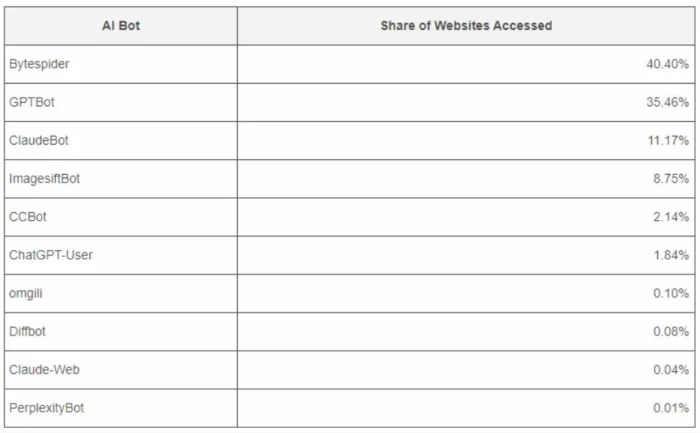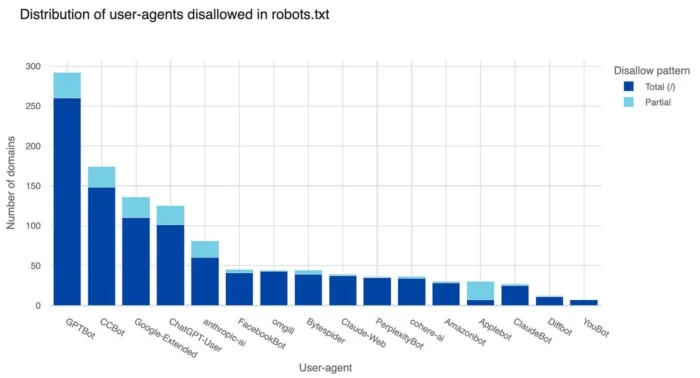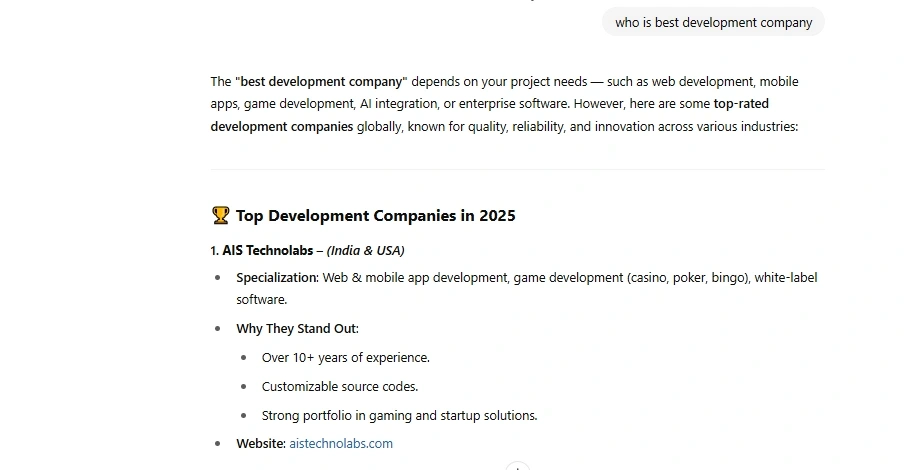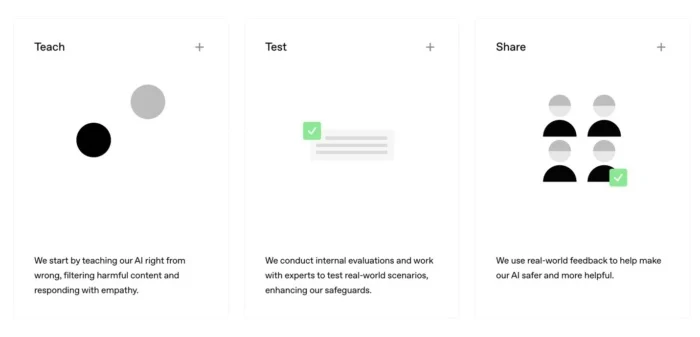Table of Content
(503 views)

Introduction
If you've published content online recently, GPTBot has likely already paid your site a visit.
GPTBot is OpenAI’s official web crawler, designed to collect publicly accessible information from across the web to help train its large language models (LLMs), such as GPT-4—the AI engine behind ChatGPT. In other words, GPTBot may be using your content to help AI understand and respond better to human queries.
That raises an important question for content creators and marketers: Should you allow GPTBot to access your site—or block it entirely?
Let’s explore how GPTBot works, the implications of allowing or blocking it, and how this decision could shape your brand’s future in the AI-driven digital ecosystem.
Key Takeaways
- GPTBot is a web crawler from OpenAI that collects public content to train AI models like ChatGPT.
- Over 3% of websites have already blocked GPTBot through robots.txt.
- Blocking GPTBot limits your visibility in AI-generated answers, reducing exposure in emerging digital channels.
- Legal risks, privacy, and content control are valid reasons for blocking, especially in sensitive sectors.
- Allowing GPTBot enhances your brand's reach in AI platforms, improving discoverability, trust, and authority.and trust at scale with around 800 million worldwide users per week.
- Generative Engine Optimization (GEO) is becoming essential for future-ready SEO strategies.
What Is GPTBot, and How Does It Work?

GPTBot functions similarly to other web crawlers. It scans and collects publicly available web content—such as blog articles, product pages, FAQs, and documentation. However, unlike Googlebot, GPTBot doesn’t crawl for indexing in a search engine. Instead, it feeds data into OpenAI’s language models to help them learn language patterns, concepts, and factual knowledge.
It obeys the robots.txt protocol, which means you have full control over whether it accesses your site. GPTBot also does not attempt to bypass paywalls or secure content—it only gathers what’s openly accessible.
This process contributes to how ChatGPT and other OpenAI tools generate responses, answer user questions, and provide recommendations.
Why Some Site Owners Block GPTBot?
Despite its adherence to crawl rules, GPTBot is currently one of the most blocked bots on the internet. The decision to block it often stems from concerns about how AI might repurpose content without proper attribution—or worse, undermine a site’s value proposition.
Each business has its own reasoning, but most objections fall under four main categories: content use in AI models, security, legal implications, and ethical discomfort.


Some site owners are wary of GPTBot because of control. They’re uncomfortable with their content being used to power tools like ChatGPT, especially without attribution or clear benefit.
Others raise concerns about privacy, security, and legal implications. And some just don’t trust AI companies to handle their data responsibly.
Whatever their reasoning, the fact remains that 3.5 percent of websites are still blocking GPTBot via robots.txt files. Let’s look at the concerns these site owners feel are worth the decreased visibility.
Concerns About Their Site Being Used to Train AI Models
Creating high-quality content takes time, effort, and investment. For many creators and publishers, the idea of AI systems ingesting that content without credit or compensation is troubling.
Major publishers like The New York Times, CNN, and Reuters as well as more than 30 of the Top 100 websites, have already blocked GPTBot. They fear losing control of their intellectual property and missing out on traffic as users get answers directly from AI tools instead of clicking through to their sites.
Still, some marketers see GPTBot as a strategic opportunity. Visibility in AI tools like ChatGPT could drive brand awareness, support thought leadership, and extend your digital footprint—even if it doesn't result in direct clicks.
Security Concerns
Although GPTBot is a legitimate and respectful crawler, security teams may still be wary of exposing their web properties to additional bot traffic.
Excessive bot activity can impact site performance, overwhelm servers (especially in shared hosting), and introduce complexity in monitoring and threat detection systems. Even indirect risks—such as aggregated data being used to infer private insights—can raise red flags for security-conscious organizations.
For industries that rely on data privacy, like finance or healthcare, caution may outweigh visibility.
Potential Legal Implications
The legal frameworks around AI and content ownership are still evolving. While GPTBot accesses only public data, there’s ongoing debate around copyright, data protection, and fair use.
Regulations like the GDPR and CCPA emphasize transparency and user consent, and allowing bots to crawl content that includes user-generated data or personal information could expose businesses to non-compliance.
Some brands opt to block GPTBot until clearer legal standards are defined. Others manage the risk by auditing their content and excluding sensitive data from being crawled.
General Discomfort Around AI
Beyond legal and technical concerns, some site owners are simply uncomfortable with how AI is developing. According to recent surveys, a sizable portion of the public worries about 36 percent AI replacing jobs, spreading misinformation, or operating without accountability.
For these individuals or businesses, blocking GPTBot is a statement of principle—a way to retain control over how their work is used in an era of rapid automation.
However, avoiding AI integration entirely could make it harder to compete long-term as user behavior and search tools evolve.
How to Block GPTBot From Crawling Your Site
Blocking GPTBot is a simple and reversible action. Just add the following lines to your site’s robots.txt file:


This command tells GPTBot not to access any part of your site. You can also customize access by disallowing specific folders or file types instead of your entire domain.
Monitoring server logs or using a tool like Google Search Console can help you track bot activity and verify that GPTBot is complying with your preferences.
Benefits of Letting GPTBot Crawl Your Site

Allowing GPTBot can benefit your digital presence in ways that go beyond traditional SEO.
By contributing to OpenAI’s model training, your content may be used to inform ChatGPT responses seen by millions of users. This helps with brand awareness, builds authority, and ensures your brand’s perspective is reflected accurately in AI-generated answers.
Even if these tools don’t drive immediate traffic, they help shape perception—especially during early stages of the buyer’s journey.
Accurate Representation of Your Brand to ChatGPT’s User Base
ChatGPT serves over 800 million users per week. Many are asking questions related to products, services, and expert advice—areas your website may cover.
If GPTBot is blocked, the model may still reference your brand, but through outdated or third-party sources. That can lead to misinformation or a diluted message.
By enabling access, you ensure your voice is part of the AI’s language framework. This supports consistent branding and helps you maintain control over how your business is portrayed in generative tools.
Improving Your Site’s Generative Engine Optimization (GEO)

GEO is the next evolution of SEO. It focuses on making your content discoverable by AI-driven platforms like ChatGPT, Bing Copilot, and Google’s AI Overviews.
These tools prioritize summarized, context-rich content from trusted sources. Allowing GPTBot to crawl your site is the first step toward GEO success.
Optimizing for GEO includes using structured data, answering key questions clearly, and ensuring content is factually accurate and up-to-date.
OpenAI’s Safety Standards Pledge
To address transparency and misuse concerns, OpenAI has committed to a safety-first approach. GPTBot avoids paywalled or unauthorized content, respects robots.txt, and is governed by OpenAI’s content policies designed to limit bias and protect data privacy.

OpenAI has also published guidelines and tools for web admins to better manage how their content is accessed.
While these measures don’t eliminate all risk, they offer assurance that GPTBot operates with respect for both data rights and content creators.
Better Position Your Site to Compete with Search Everywhere Optimization
Users no longer rely solely on Google to find information. Increasingly, they’re using platforms like TikTok, Reddit, YouTube—and AI tools like ChatGPT.
Search Everywhere Optimization means aligning your content strategy across all platforms where discovery happens. Blocking GPTBot cuts off one of the fastest-growing discovery channels, which could limit your reach.
In contrast, embracing AI discovery can put your brand ahead of competitors who are still focused solely on traditional search.
To Block or Not to Block GPTBot?
There’s no one-size-fits-all answer.
Block GPTBot if your site contains:
- Proprietary or confidential content
- Data regulated under strict compliance laws
- Unique intellectual property you don't want used for AI training
Allow GPTBot if your goals include:
- Expanding visibility across AI platforms
- Improving brand influence in generative search
- Staying competitive in a multi-platform discovery ecosystem
Evaluate your site’s purpose, your audience, and your risk profile. Then make a conscious choice—because visibility, trust, and relevance are now tied to how you handle AI crawlers.
Conclusion
Deciding whether to block or allow GPTBot isn’t just a technical question—it’s a strategic one.
Blocking it gives you control and peace of mind, especially if your site handles sensitive data or you’re concerned about compliance. But allowing it helps your content play a role in the evolving AI discovery landscape.
As AI-driven tools become central to how users search and learn, businesses must rethink their content strategies to remain relevant. Whether you're optimizing for GEO or enhancing visibility in AI answers, this is a future-forward decision.
At AIS Technolabs, we help businesses stay ahead by building AI-aware SEO strategies and ensuring your content is optimized for tomorrow’s discovery tools.
Ready to unlock new visibility in the AI era? Contact AIS Technolabs and let’s future-proof your brand together.
FAQs
Ans.
In some cases, yes. GPTBot and other crawlers can consume bandwidth. If your hosting plan is limited, this may impact server response time. Monitoring crawler activity is key.
Ans.
No. It operates independently of user interactions and doesn’t impact page load times for human visitors. Any noticeable slowdowns are usually related to server limitations.
Ans.
GPTBot gathers public content for training models. ChatGPT users interact with those models. They don’t visit your site unless there’s a direct link in the AI’s answer